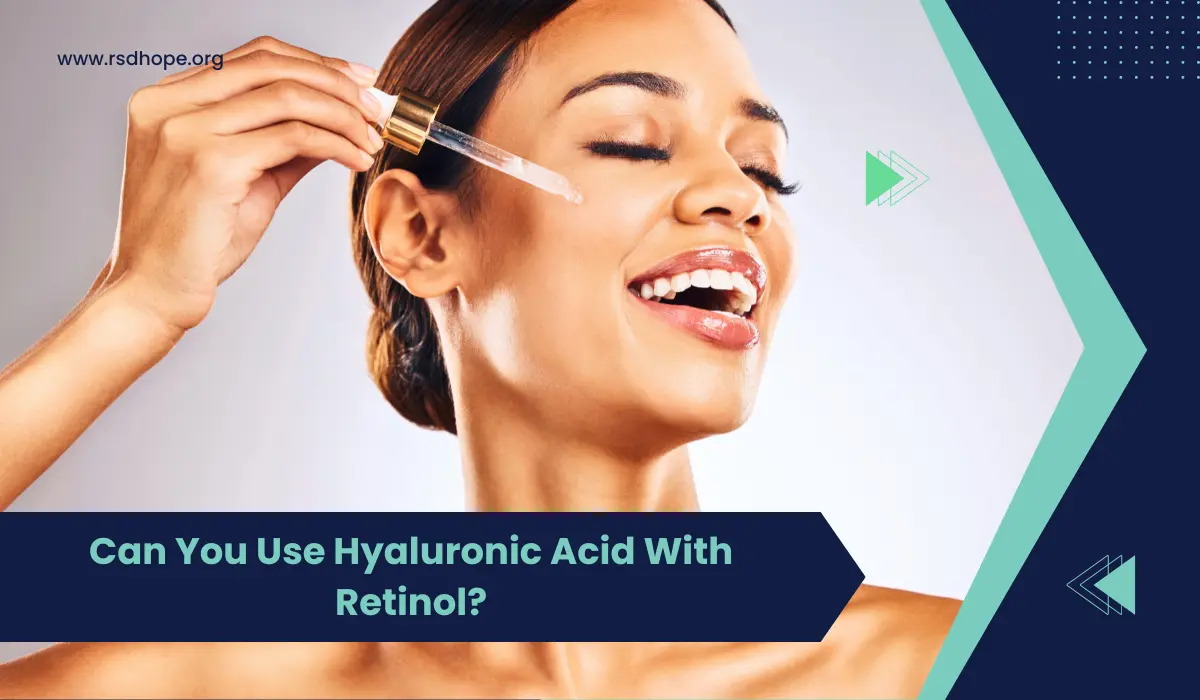In the world of skincare, two ingredients have taken center stage: hyaluronic acid and retinol. These powerhouses have gained immense popularity for their ability to transform the skin, providing hydration, plumpness, and anti-aging benefits. But can you use hyaluronic acid with retinol? In this comprehensive guide, we’ll explore how these two ingredients work together and how you can incorporate them into your skincare routine for optimal results.
Key Takeaways
- Hyaluronic acid and retinol can be used together to provide hydration and anti-aging benefits.
- Hyaluronic acid can help counteract the potential dryness caused by retinol.
- Starting slowly and gradually increasing the frequency of retinol use is crucial to minimize irritation.
What is hyaluronic acid?
Hyaluronic acid is a naturally occurring substance in the body that plays a crucial role in maintaining skin hydration. As a skincare ingredient, it acts like a moisture magnet, attracting and retaining water in the skin.
This results in a plumper, more supple appearance, reducing the appearance of fine lines and wrinkles. Hyaluronic acid is suitable for all skin types, including sensitive and acne-prone skin, as it is non-irritating and non-comedogenic.

What is retinol?
Retinol is a form of vitamin A that has gained a reputation as a gold standard in anti-aging skincare. It works by stimulating collagen production, increasing cell turnover, and improving skin texture.
Regular use of retinol can help reduce the appearance of fine lines, wrinkles, and age spots, resulting in a more youthful and radiant complexion.
However, retinol can also cause potential side effects, such as dryness, flaking, and sensitivity, especially when first introduced into a skincare routine.
Benefits of using hyaluronic acid and retinol together
When used together, hyaluronic acid and retinol create a powerful combination that addresses multiple skincare concerns. Hyaluronic acid provides intense hydration, helping to counteract the potential dryness caused by retinol.
This is particularly beneficial for those with sensitive or dry skin who may find retinol irritating on its own. By keeping the skin hydrated and plump, hyaluronic acid enhances the anti-aging effects of retinol, resulting in a more youthful and glowing complexion.
How to incorporate hyaluronic acid and retinol into your skincare routine?
To effectively incorporate hyaluronic acid and retinol into your skincare routine, follow these simple steps:
- Cleanse your face with a gentle, non-stripping cleanser.
- Apply a hyaluronic acid serum or moisturizer to damp skin, allowing it to absorb fully.
- Wait a few minutes before applying a pea-sized amount of retinol, starting with a lower concentration (0.01% to 0.03%) and gradually increasing as your skin adjusts.
- Follow up with a nourishing moisturizer to lock in hydration and provide an extra layer of protection.
When introducing retinol into your routine, start by using it once or twice a week, gradually increasing the frequency as your skin builds tolerance. It’s essential to use sunscreen during the day, as retinol can increase skin sensitivity to UV rays.
Potential side effects and precautions
While hyaluronic acid and retinol are generally well-tolerated, some individuals may experience side effects, particularly when using retinol. These can include redness, dryness, flaking, and sensitivity.
To minimize potential irritation, it’s crucial to start with a lower concentration of retinol and gradually increase as your skin adjusts.
Always perform a patch test before incorporating new products into your routine, and consult with a dermatologist if you have any concerns or persistent irritation.
Recommended products containing hyaluronic acid and retinol
Several skincare products effectively combine hyaluronic acid and retinol for maximum benefits. Some popular options include:
- SkinCeuticals Retinol 0.3 (retinol) and SkinCeuticals Hyaluronic Acid Intensifier (hyaluronic acid)
- RoC Retinol Correxion Deep Wrinkle Night Cream (contains both retinol and hyaluronic acid)
- The Ordinary Retinol 0.2% in Squalane (retinol) and The Ordinary Hyaluronic Acid 2% + B5 (hyaluronic acid)
When choosing products, consider your skin type, sensitivity, and specific concerns. It’s also essential to introduce new products gradually and monitor your skin’s response.
Also Read: How To Get Glass Skin? Steps For Skin Perfection
Conclusion
Hyaluronic acid and retinol are a powerful duo in the world of skincare, working together to provide hydration, plumpness, and anti-aging benefits. By understanding how these ingredients complement each other and incorporating them into your skincare routine correctly, you can achieve youthful, glowing skin.
Remember to start slowly, listen to your skin, and consult with a dermatologist if you have any concerns. With patience and consistency, you’ll be on your way to unlocking the full potential of this dynamic skincare duo.
Frequently asked questions about using hyaluronic acid and retinol
Yes, you can use hyaluronic acid and retinol together if you have sensitive skin. Hyaluronic acid can help soothe and hydrate the skin, reducing the potential irritation caused by retinol. Start with a lower concentration of retinol and use it less frequently, gradually increasing as your skin builds tolerance.
Apply hyaluronic acid before retinol. Hyaluronic acid helps hydrate and plump the skin, creating a protective barrier that can minimize the potential irritation caused by retinol. Allow the hyaluronic acid to absorb fully into the skin before applying retinol.
While you can use hyaluronic acid during the day, it’s best to reserve retinol for your nighttime routine. Retinol can increase skin sensitivity to UV rays, making it crucial to use sunscreen during the day. Hyaluronic acid, on the other hand, can be used both morning and night for continuous hydration.
The time it takes to see results varies depending on individual skin concerns and the consistency of use. Hyaluronic acid provides immediate hydration, resulting in plumper, more supple skin. Retinol, however, may take several weeks to a few months to show visible improvements in fine lines, wrinkles, and skin texture. According to a study published in the Archives of Dermatology, participants who used retinol for 24 weeks showed significant improvements in fine wrinkles, skin texture, and skin tone.

